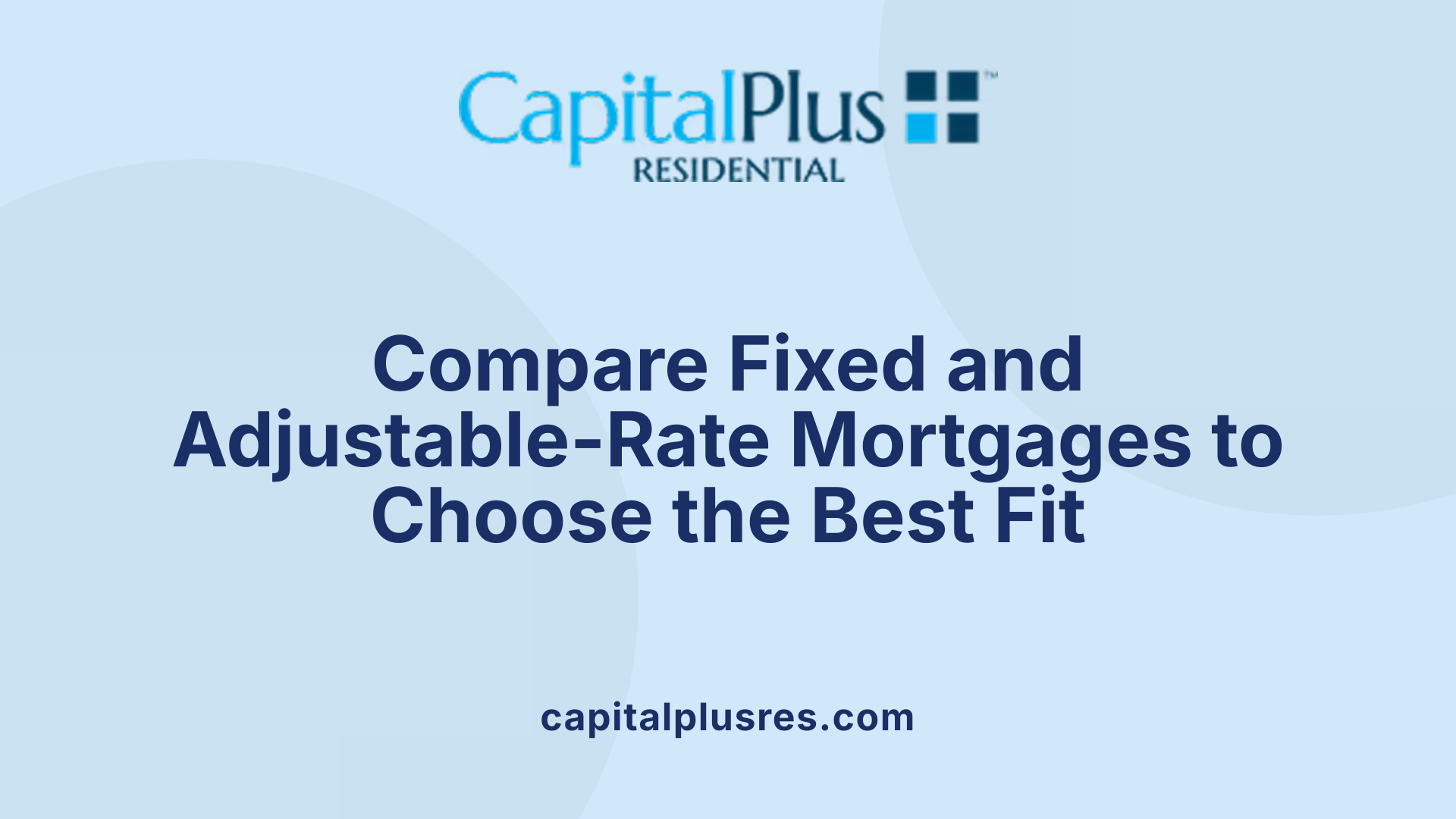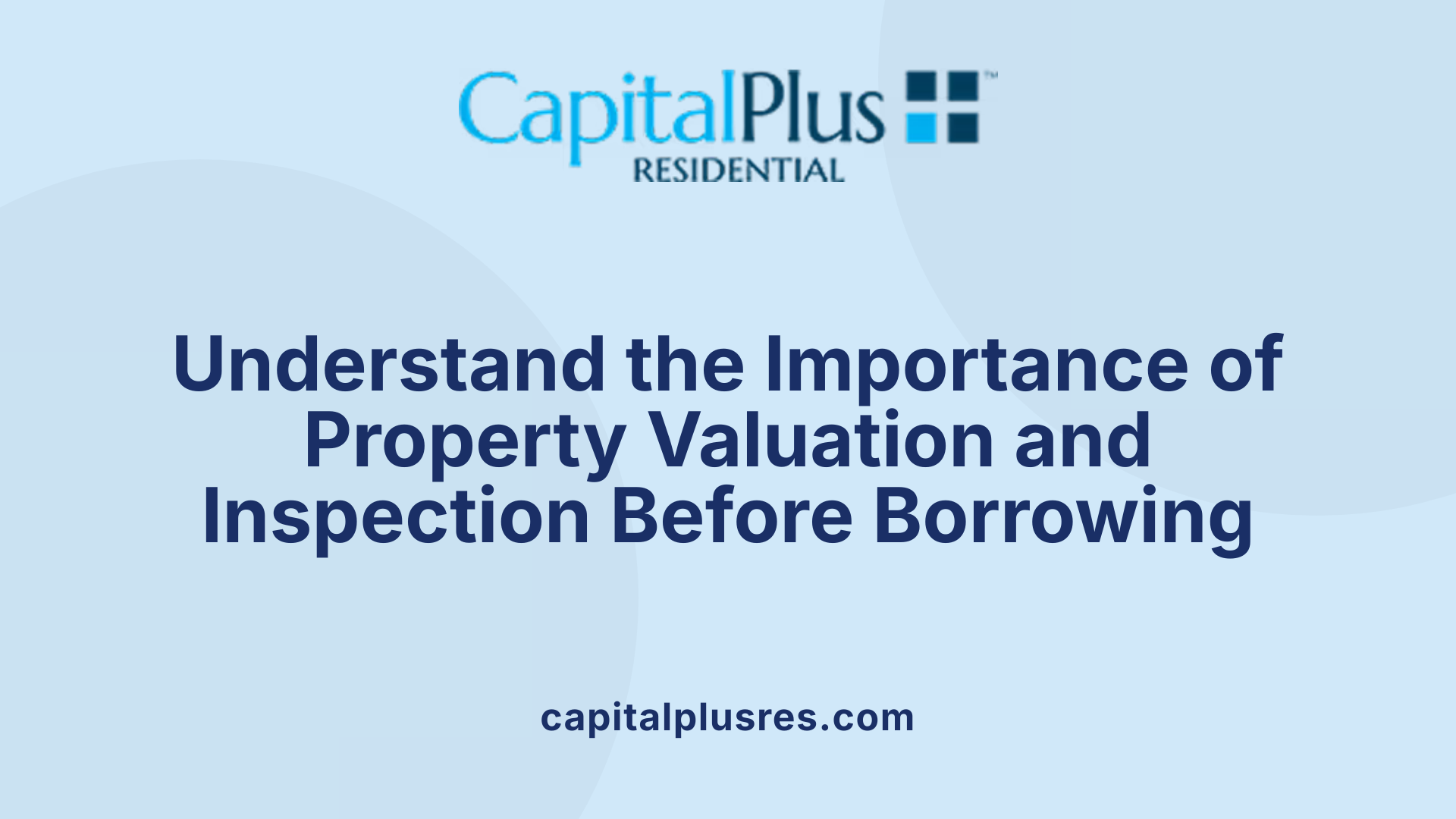An Essential Guide to Mortgage Terms and Conditions
Navigating the world of home financing can be complex, but understanding fundamental mortgage terms and conditions helps borrowers make informed decisions. This guide explores key concepts such as mortgage types, important clauses, costs, and the responsibilities involved in borrowing to buy or refinance a home. Whether you're a first-time buyer or refinancing, knowing these details empowers you to manage your mortgage confidently and avoid surprises down the line.
Basic Mortgage Terminology Every Borrower Should Know

What are some essential mortgage terms and definitions that every borrower should understand?
When entering the world of home financing, it’s crucial for borrowers to familiarize themselves with key mortgage terms. These terms help you understand the financial agreement you’re entering into and enable you to make smarter decisions.
One fundamental concept is principal, which is the original amount of money borrowed or the remaining balance of the loan that needs to be paid back.
The interest rate is the cost of borrowing money, expressed as a percentage. It affects your monthly payment, and understanding whether you have a fixed or variable rate can influence your long-term affordability.
Amortization describes how your loan is paid off over time through scheduled payments. Each payment covers both interest and part of the principal, gradually reducing the debt until it is fully paid.
The loan-to-value (LTV) ratio compares your mortgage amount to the appraised value of your property. A lower LTV often results in better loan conditions, while a high LTV might require additional insurance.
Escrow accounts are managed by your lender to hold funds for property taxes and homeowners insurance, ensuring these bills are paid on time without surprise costs.
Understanding private mortgage insurance (PMI) is also essential if your down payment is less than 20%. PMI protects the lender in case of default and can be an added monthly expense.
Finally, knowing closing costs — various fees paid at the end of the home-buying process including appraisal, title insurance, and lender fees — helps you prepare financially for the closing day.
Familiarity with these terms can enhance your confidence and enable you to navigate mortgage agreements more effectively, ensuring clear understanding of your financial commitments.
Different Types of Mortgages: Fixed vs. Adjustable-Rate

What basic knowledge of mortgage financing is needed to understand the process?
Understanding mortgage financing involves knowing several core concepts. These include interest rates, which determine the yearly cost of borrowing; loan terms, indicating the length of the mortgage; and amortization, the process of paying off the loan over time through regular payments. Essential components of a mortgage payment are principal, interest, taxes, and insurance, often abbreviated as PITI.
It is also important to distinguish between different mortgage types. Fixed-rate mortgages have interest rates that stay constant throughout the loan period, offering predictable payments. Adjustable-rate mortgages (ARMs), on the other hand, feature interest rates that change periodically based on an index, which can lead to varying monthly costs.
Other vital aspects include mortgage points—fees paid at closing to reduce interest rates—and private mortgage insurance (PMI), required when down payments are less than 20%. The collateral securing the loan is usually the property itself, and understanding the foreclosure process helps recognize the importance of timely payments.
Additionally, knowing the qualification requirements, loan categories, and additional costs like closing costs and annual percentage rates (APR) enables borrowers to make well-informed choices. Overall, having a clear grasp of these terms and their financial impact is crucial for navigating mortgage options confidently.
Fixed-Rate Mortgages
A fixed-rate mortgage offers a stable interest rate over the entire loan period. Typically available in 15, 20, or 30-year terms, this type suits borrowers who prefer consistent monthly payments without surprises. Because the rate remains unchanged, borrowers can easily plan their budgets and avoid interest rate fluctuations.
Adjustable-Rate Mortgages (ARMs)
ARMs feature interest rates that adjust periodically, often annually, after an initial fixed period. Common adjustable periods include 5, 7, or 10 years, after which the rate can fluctuate based on an index like the LIBOR or the U.S. Treasury rate. To protect borrowers, ARMs include caps that limit how much interest rates can increase annually or over the life of the loan.
Interest Rate Caps
Interest rate caps are limits on how high a mortgage’s interest rate can rise. They provide predictability and protection against sharp increases. Typically, caps are set per adjustment period and over the total life of the loan, giving borrowers confidence that their payments won't escalate beyond a certain point.
Hybrid Mortgages
Hybrid mortgages combine features of fixed and adjustable-rate loans. They often start with a fixed rate for a set number of years, such as 5, 7, or 10, then switch to an ARM. For example, a 5/1 ARM has a fixed rate for five years, then adjusts annually. These loans can offer lower initial rates while providing flexibility for future adjustments, suitable for borrowers planning to sell or refinance before the adjustable period begins.
| Mortgage Type | Typical Duration of Fixed Rate | Adjustment Period | Features | Suitable For |
|---|---|---|---|---|
| Fixed-Rate | Entire loan term | None | Stable payments | Borrowers preferring predictability |
| ARM | Fixed for 3-10 years | Annually or semi-annually | Adjustable rates with caps | Those expecting to move or refinance |
| Hybrid | Fixed for 5-10 years | Usually annually after fixed period | Combines stability and flexibility | Buyers who want initial predictability with future flexibility |
Unpacking Mortgage Agreements: Key Concepts and Conditions
What are the key concepts and conditions typically included in a mortgage agreement?
A mortgage agreement outlines the essential terms of a home loan. It specifies the initial amount borrowed, known as the principal, and the interest rate applied to that amount. The agreement also details the duration of the loan, called the loan term, which can range from 15 to 30 years or more.
An important part of the mortgage is the amortization schedule. This schedule shows how each payment is split between paying down the principal and covering interest, gradually reducing the debt over time.
The document clearly states the conditions that define default, such as missed payments or breach of loan terms, and describes the lender’s rights if default occurs, including foreclosure procedures.
Payment terms are also included, outlining when payments are due, late fee policies, and penalties for missed or late payments. The agreement often specifies clauses related to prepayment, such as whether early payments are allowed and if any fees apply.
Additionally, mortgage agreements require borrowers to maintain property insurance to protect against damages, and they often include deposit arrangements into an escrow account. This escrow holds funds for paying property taxes and insurance premiums on behalf of the homeowner.
Finally, the contract might include provisions for refinancing options, rights for prepayment, and other conditions that safeguard both parties’ interests, providing a comprehensive framework for managing the mortgage throughout its duration.
Important Conditions Borrowers Must Be Aware Of
What are some important mortgage conditions every borrower should know before signing a loan agreement?
Before committing to a mortgage, borrowers need to be familiar with several essential conditions that influence their ability to secure and maintain the loan. One of the primary considerations is the down payment, which varies depending on the type of loan. Conventional loans often require at least 3-5%, while FHA loans typically require around 3.5%. VA and USDA loans may not require a down payment at all, making them attractive options for eligible borrowers.
Mortgage insurance is another critical aspect. Borrowers with conventional loans and a down payment less than 20% usually need to pay private mortgage insurance (PMI). This insurance protects the lender but adds to the monthly costs. In contrast, VA and USDA loans often do not require mortgage insurance, reducing ongoing expenses.
Meeting certain qualification criteria is also vital. This includes having a good credit score—generally 620 or higher for conventional loans, and at least 580 for FHA loans. Income and assets are scrutinized to ensure the borrower can handle monthly payments. Typically, lenders cap the debt-to-income ratio at around 41%, meaning your total monthly debt payments shouldn’t exceed 41% of your gross monthly income.
There are other factors influencing mortgage approval, such as property appraisal, clear title, and compliance with underwriting standards. Borrowers should avoid large financial changes during the approval process, like new debts or withdrawals from savings, as these can affect qualification.
Finally, understanding specific loan restrictions—such as maximum loan-to-value ratios and property eligibility—ensures borrowers are well-prepared. Recognizing that the property serves as collateral and assessing your capacity to repay are fundamental steps.
Being aware of these conditions helps borrowers navigate the home buying process more confidently, avoiding surprises and ensuring smoother approval and ownership experience.
Clarifying Mortgage Concepts for Better Borrowing Choices
How can mortgage concepts be clarified for informed borrowing decisions?
Understanding mortgage terms is essential for making smart borrowing choices. Borrowers should start by familiarizing themselves with fundamental terms such as interest rate, APR, amortization, and different loan options like ARMs (Adjustable-Rate Mortgages) and fixed-rate loans.
Reviewing all related documents, especially the Closing Disclosure and the loan agreement, can reveal hidden fees, prepayment penalties, or features like balloon payments that might affect the overall cost of the loan.
It's also important to ask about how interest rates on adjustable loans can change over time, and how these fluctuations impact monthly payments and total interest paid. Considering the APR, which includes interest and fees, helps gauge the true cost of borrowing.
Consulting professionals, such as mortgage advisors or financial planners, can provide tailored explanations of complex products, including interest-only mortgages or loans with rate caps. Additionally, utilizing trusted resources like 'Your Home Loan Toolkit' allows borrowers to deepen their understanding of the mortgage process.
By taking these steps, borrowers can clarify their mortgage concepts, identify the best products for their financial situation, and avoid surprises after closing.
The Significance of Mortgage Clauses and Provisions

What are common mortgage clauses and provisions that borrowers should understand?
Mortgage agreements contain several clauses and provisions that define the rights, responsibilities, and protections for both borrowers and lenders. Familiarity with these clauses helps borrowers navigate their mortgage terms confidently.
One essential clause is the prepayment clause. This specifies whether you can pay off your loan early and if so, whether there are any penalties involved. Some lenders charge prepayment penalties to compensate for lost interest, so understanding this clause prevents unexpected costs.
The default clause outlines what actions constitute a default, such as missing payments or failing to maintain insurance. This section also describes what remedies the lender can pursue, including foreclosure.
Another critical provision is the acceleration clause. It allows lenders to demand full repayment of the mortgage if certain conditions, like default or transfer without approval, occur early. This clause protects the lender from increased risk if the borrower violates the loan terms.
The alienation or transfer clause pertains to changes in ownership or transfer of the property. If the borrower transfers the property without the lender’s consent, this clause may enable the lender to accelerate the loan or impose new terms.
In addition, mortgage agreements often include property insurance requirements. This generally involves the mortgagee clause in insurance policies, which ensures the lender’s interests are protected in case of damage or loss.
Understanding these provisions enables borrowers to meet their contractual obligations, avoid penalties, and protect their interests. These clauses, when clearly understood, can prevent surprises and facilitate smoother loan management.
| Clause Type | Description | Purpose |
|---|---|---|
| Prepayment Clause | Terms regarding early repayment | Allows flexibility or imposes penalties |
| Default Clause | Circumstances that trigger default | Defines remedy options |
| Acceleration Clause | Full repayment demand upon breach | Protects lender from increased risk |
| Transfer/Alienation Clause | Rights related to property transfer | Prevents unauthorized transfer |
| Insurance Requirements | Property insurance obligations | Protects lender and borrower |
Grasping these clauses gives borrowers take control of their mortgage terms, supports informed decision-making, and promotes long-term financial stability.
Navigating Closing Costs and Associated Fees

What Are the Different Types of Closing Costs?
Closing costs encompass a variety of fees homeowners pay when finalizing a real estate transaction. These include loan origination fees, appraisal fees, title search and insurance, recording fees, and taxes. Loan origination fees, for example, cover processing the loan and are paid to the lender. Appraisal fees compensate appraisers for estimating the property's value, ensuring the loan amount aligns with market worth.
Title insurance protects against potential issues with property ownership, such as liens or undiscovered claims. Recording fees are paid to local government bodies to officially record the new ownership documents. Additionally, borrowers often pay for property taxes and homeowners insurance, which are collected through escrow accounts.
Average Cost Percentages of Closing Costs
On average, closing costs range from about 2% to 5% of the home’s purchase price. For example, on a $300,000 home, closing costs might span $6,000 to $15,000. These percentages include various fees and can vary by location, loan type, and the specifics of the property's sale.
What Do Closing Costs Cover?
Closing costs cover the expenses required to legally transfer ownership and secure the mortgage. This includes the loan setup charges, third-party services like home inspections, appraisals, and title searches. They also include taxes and insurance premiums that are often paid upfront at closing. Some of these costs are fixed, while others fluctuate based on the property's price or local regulations.
Strategies to Minimize Expenses
Borrowers can reduce closing costs by shopping around for service providers, negotiating fee waivers, or choosing lenders who offer low or no-closing-cost loans. Being prepared with a clear understanding of what each fee covers can also avoid surprises during closing. Additionally, opting for a slightly higher interest rate in exchange for lender credits can lower upfront costs. Keeping good credit scores and providing complete, accurate financial information can lead to better loan terms and lower fees.
| Aspect | Typical Range | Details |
|---|---|---|
| Types of Costs | Varied | Includes origination, appraisal, title, taxes, insurance, recording fees, and more. |
| Cost Percentage | 2% - 5% | Based on the home's purchase price with regional variations. |
| Main Coverages | All necessary transfers | From securing the loan and title to registering ownership and paying taxes. |
| Minimization Strategies | Negotiation, shopping | Shop for services, negotiate fees, choose lender credits, and maintain good credit. |
Understanding these components allows borrowers to navigate the closing process more confidently, ensuring they’re aware of total costs and ways to manage or reduce them.
Understanding and Managing Mortgage Risks and Protections
What are some important mortgage conditions every borrower should know before signing a loan agreement?
Before committing to a mortgage, borrowers must familiarize themselves with crucial conditions to ensure a smooth process and avoid surprises. One of the primary factors is the down payment, which is the initial amount paid toward the home purchase. Conventional loans often require at least 3-5%, while FHA loans may accept even lower percentages, such as 3.5%. VA and USDA loans, however, sometimes require no down payment at all.
In addition to the down payment, understanding mortgage insurance requirements is essential. Borrowers with less than 20% down typically must pay private mortgage insurance (PMI), which protects lenders if borrowers default. Veterans and USDA loan recipients, on the other hand, are often exempt from this insurance.
Credit scores play a vital role too. Most lenders ask for a minimum score—around 620 for conventional loans and 580 for FHA loans. Your debt-to-income (DTI) ratio, which compares your monthly debts to gross income, usually should not exceed 41%, as this indicates your capacity to handle new debt.
Lenders also scrutinize the property's appraisal to verify its value, ensuring the loan amount does not surpass the property's worth. Other underwriting conditions might involve clear title, sufficient documentation of income and assets, and no significant financial changes during approval.
Furthermore, understanding loan-to-value (LTV) ratios helps you grasp how much of the home's value is financed—higher ratios indicate more risk for the lender. Borrowers should also know any specific restrictions tied to their loan type, such as maximum LTV limits or property eligibility criteria.
Awareness of these terms and conditions allows borrowers to be better prepared, making informed decisions and avoiding setbacks during the home buying and mortgage process.
| Condition | Typical Requirement | Additional Notes |
|---|---|---|
| Down payment | 0-5% (varies) | Lower for VA, USDA loans |
| Mortgage Insurance | Yes if LTV > 80% | PMI usually required for conventional loans |
| Minimum Credit Score | ~580-620 | Influences interest rates and loan options |
| Debt-to-Income Ratio | <41% | Shows capacity to repay |
| Property Appraisal | Meets or exceeds purchase price | Ensures property value aligns with loan amount |
| Loan-to-Value Ratio | Typically up to 97% | Higher LTVs may require additional protections |
Understanding these elements equips you with the knowledge to navigate mortgage agreements confidently and secure the best terms for your financial situation.
The Role of Appraisals and Inspection in Mortgage Approval

What is involved in the Home Appraisal Process?
The home appraisal process is a crucial step in securing a mortgage, as it determines the property's market value. An independent certified appraiser conducts a physical inspection of the home, evaluating its size, features, condition, and location. They compare the property with recent sales of similar homes in the area to arrive at an estimate of value. This appraisal protects lenders by ensuring they are not loaning more than the home's worth. Typically, the appraisal report is submitted to the lender, who uses it to decide on loan approval and setting the loan-to-value ratio.
Why is a Home Inspection Important?
A home inspection provides a detailed assessment of the property's condition, focusing on structural elements, roofing, plumbing, electrical systems, and appliances. Conducted by a licensed inspector, this examination helps identify potential problems that could require costly repairs or indicate underlying issues. For buyers, a home inspection offers peace of mind, informing negotiation strategies and contingency plans. Sellers may also benefit by uncovering issues before listing, which can facilitate smoother transactions.
How Do Appraisals Affect Loan Approval?
Appraisals directly influence the approval and terms of a mortgage. If the appraised value falls below the purchase price or the loan amount requested, lenders may reduce the mortgage, decline approval, or require the borrower to make a larger down payment. A low appraisal can lead to renegotiation of the purchase price or termination of the deal if contingencies allow. The appraisal serves as a safeguard for lenders, ensuring they do not lend more than the value of the property.
What is the Role of an Inspection in Property Condition?
While an appraisal assesses value, the inspection focuses on condition. A thorough inspection can reveal issues like foundation cracks, leaks, or faulty wiring that might not be visible during a casual viewing. This information helps buyers decide whether to proceed, request repairs, or negotiate price reductions. Mortgage approval often depends on the property meeting certain standards; major defects could affect insurability or future resale value.
| Aspect | Description | Impact on Mortgage Process |
|---|---|---|
| Home Appraisal | Estimates real estate value, conducted by a certified appraiser | Determines loan amount, influences approval, especially if value is less than asking price |
| Home Inspection | Inspects property condition for defects and repairs needed | Affects buyer confidence, may lead to renegotiation or repair requests |
| Impact on Approval | Appraisal ensures loan does not exceed property value; inspection affects property condition compliance | Low appraisal can reduce financing amount; major defects may delay or stop approval |
Understanding the results of both appraisal and inspection are essential for every borrower. These steps safeguard the interests of both lenders and buyers, ensuring that the property is worth the investment and in good condition, reducing the risk of future disputes or financial loss.
Making Informed Mortgage Decisions
Armed with a comprehensive understanding of mortgage terms, conditions, costs, and protections, borrowers can approach their home financing with confidence. Knowledge of these elements not only helps in negotiating better loan terms but also prepares borrowers for their ongoing responsibilities, reducing risks of default or surprises. Continually educating oneself through trusted resources and professional advice is essential for successful homeownership and mortgage management. Ultimately, being well-informed empowers you to make decisions aligned with your long-term financial goals and ensures a smoother, more transparent borrowing experience.
References
Latest Blog


Get Pre-Approved Today
Start your secure online application now so you can get pre-approved for a mortgage (and close on your dream home) quickly within 5 minutes.









